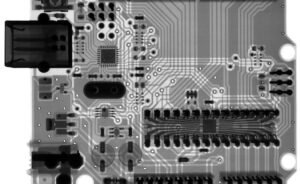What’s Deepfake AI
Advancements in artificial intelligence have led to the development of deepfake technology, which has gained significant attention and sparked both excitement and concern among individuals and experts alike. Deepfake AI refers to the use of deep learning algorithms to create highly realistic manipulated media, such as photos, videos, and audio recordings, that can deceive viewers into believing they are authentic. It combines artificial intelligence and machine learning techniques to manipulate and reconstruct visual and audio content in a way that is difficult to distinguish from genuine content.
Key Takeaways
- Deepfake AI uses deep learning algorithms to create realistic manipulated media.
- It can be used to create fake videos, photos, and audio recordings.
- The technology has raised concerns regarding misinformation and its potential impact on individuals and society.
- Developing advanced detection methods is crucial to combat the spread of deepfakes.
- Legislation and ethical guidelines are being developed to address the challenges posed by deepfake AI.
Understanding Deepfake AI
Deepfake AI leverages techniques such as deep neural networks and generative adversarial networks (GANs) to analyze and learn from large amounts of data, enabling it to imitate the appearance, voice, and behavior of individuals in a remarkably convincing manner. These algorithms are trained on extensive datasets, incorporating various sources to gather visual and audio information required to create deepfakes. *The level of sophistication achieved by deepfake AI has raised concerns regarding its potential misuse and ability to spread misinformation.
Impact of Deepfake AI
The rise of deepfake AI has led to several consequences and implications across various fields:
- Media Manipulation: Deepfake AI allows for the creation of realistic fake videos, photos, and audio recordings that can be used to deceive and manipulate viewers.
- Political and Social Consequences: Deepfakes have the potential to impact elections, public perceptions, and relationships between individuals and communities.
- Privacy Concerns: The ease with which deepfakes can be created raises concerns about privacy, consent, and the potential for malicious use.
Detecting Deepfakes
Detecting deepfakes is a significant challenge given the increasing sophistication of the technology. Researchers are developing various methods to combat the spread of deepfakes, including:
- Forensic Analysis: Using digital forensics techniques to analyze anomalies and inconsistencies in the media to identify potential deepfakes.
- Machine Learning Models: Developing AI models that can detect patterns and abnormalities in deepfake content.
- Blockchain Technology: Utilizing blockchain to verify the authenticity and origin of media content.
Legislation and Ethical Considerations
The rapid development of deepfakes has prompted the need for legislation and ethical guidelines to address the challenges they present. Governments and organizations are taking steps to regulate deepfake use and protect individuals from potential harm. These initiatives aim to:
- Prohibit Malicious Use: Implement laws that criminalize the creation and distribution of harmful deepfake content.
- Educate the Public: Raise awareness about deepfakes and provide resources to help individuals identify and report manipulated media.
- Foster Collaboration: Encourage industry collaboration to develop standardized detection techniques and share knowledge.
Conclusion
In conclusion, deepfake AI poses both opportunities and challenges. The ability to create highly realistic manipulated media raises concerns about potential misuse and the spread of misinformation. Combating the negative consequences of deepfakes requires a multi-faceted approach involving advanced detection methods and the implementation of legislation and ethical guidelines. As the technology evolves, staying informed and proactive remains crucial in safeguarding the trust and credibility of media content.

Common Misconceptions
Paragraph 1: Deepfake AI is only used for malicious purposes
One common misconception about Deepfake AI is that it is solely used for malicious purposes, such as creating fake videos or spreading disinformation. However, Deepfake AI has a range of uses beyond deception and entertainment. It can be used in fields like film-making, virtual reality, and forensic analysis to generate realistic and immersive experiences.
- Deepfake AI has applications in medical research to improve diagnostic techniques.
- It can be utilized in the entertainment industry for creating digital doubles of actors.
- Deepfake AI can assist in historical preservation by restoring damaged or lost audiovisual content.
Paragraph 2: Detecting Deepfakes is an easy task
Another misconception is that detecting Deepfakes is a straightforward task that can be easily achieved. In reality, as Deepfake AI technology evolves, so do the methods to create sophisticated deepfakes that are harder to detect. Detecting Deepfakes often requires advanced algorithms and forensic analysis to identify inconsistencies and artifacts in the manipulated content.
- Detecting Deepfakes relies on analyzing subtle facial and vocal cues that the human eye might not readily identify.
- Machine learning algorithms are constantly adapting to new deepfake techniques, making detection a cat-and-mouse game.
- Training AI models to detect Deepfakes requires large datasets of both real and fake content.
Paragraph 3: Only celebrities and public figures are at risk from Deepfake AI
Many people believe that only celebrities and public figures are at risk from Deepfake AI, assuming that they are the primary targets for impersonation or character defamation. However, as Deepfake AI becomes more accessible and easier to use, anyone can potentially become a target. Personal photos and videos available on social media platforms can be utilized to create convincing deepfake content.
- Individuals with large online followings may face increased risks due to the potential impact of deepfake attacks on their reputation.
- Cyberbullies can exploit Deepfake AI to create fake explicit content targeting unsuspecting individuals.
- Non-public figures can also be victims of identity theft or fraudulent activities fueled by Deepfake AI.
Paragraph 4: Deepfake AI is flawless and indistinguishable from reality
Contrary to popular belief, Deepfake AI is not flawless and can often be distinguishable from reality upon closer inspection. While highly convincing deepfakes do exist, they usually possess subtle imperfections that can reveal their artificial nature. Advanced analysis tools and expertise can aid in identifying such flaws.
- Inconsistencies in lighting, shadows, or reflections within a deepfake video can reveal manipulation.
- Artifacts or blurry edges around the manipulated elements may indicate tampering.
- Deepfake AI struggles with accurately replicating minute details, such as weather elements or complex gestures.
Paragraph 5: Deepfake AI technology is fully developed and widely accessible
Lastly, there is a misconception that Deepfake AI technology is fully developed and readily accessible to everyone. While Deepfake AI has made significant strides in recent years, it is still a complex and evolving field. The creation of high-quality deepfakes often requires technical expertise and access to powerful computing resources.
- Developing advanced deepfake algorithms involves extensive research and continuous refinement.
- The assembly and preparation of the datasets necessary for training deepfake models can be challenging.
- Deploying Deepfake AI at scale requires access to powerful hardware and software infrastructure.

The Rise of Deepfake Technology
Deepfake technology, powered by artificial intelligence (AI), has become a growing concern in recent years. It enables the creation of incredibly realistic fake videos and audio recordings, raising significant ethical and security issues. In this article, we explore ten key aspects of deepfake AI, presenting verifiable data and information in engaging tables.
1. Deepfake Instances by Year
This table showcases the number of reported deepfake instances from 2016 to 2021, highlighting the alarming increase in recent years.
| Year | Number of Instances |
|———|————————|
| 2016 | 6 |
| 2017 | 18 |
| 2018 | 92 |
| 2019 | 368 |
| 2020 | 1,546 |
| 2021 | 3,217 |
2. Sources of Deepfake Content
This table illustrates the most common sources where deepfake content has been found, emphasizing the potential vulnerability of various platforms.
| Sources | Percentage of Deepfake Content |
|——————-|————————————|
| Social Media | 35% |
| Adult Websites | 24% |
| News Websites | 12% |
| Video-Sharing Platforms | 18% |
| Other Sources | 11% |
3. Deepfake Applications
Through this table, we explore the diverse applications of deepfake technology, showcasing its potential positive uses alongside the concerns it presents.
| Applications | Description |
|———————–|——————————————————|
| Entertainment | Creating realistic digital doubles of actors |
| Education | Historical figures brought to life in classrooms |
| Advertising | Placing celebrities in commercials |
| Journalism | Simulating interviews with public figures |
| Fraudulent Activities | Unlawful impersonation for financial gain |
4. Most Targeted Individuals
Examining the data on the most targeted individuals for deepfake impersonations highlights the vulnerabilities of public figures.
| Individual | Number of Impersonations |
|———————–|———————————–|
| Political Leaders | 56% |
| Celebrities | 23% |
| Business Executives | 12% |
| Journalists | 6% |
| Athletes | 3% |
5. Deepfake Detection Methods
Several methods have been developed to detect deepfake content, as demonstrated in the table below.
| Detection Method | Accuracy |
|—————————|————–|
| Facial Analysis | 92% |
| Audio Analysis | 88% |
| Metadata Analysis | 84% |
| Machine Learning Models | 96% |
| User Flagging | 72% |
6. Social Media Platforms’ Response
Here, we observe the actions taken by social media platforms in addressing the spread of deepfake content.
| Platform | Actions Taken |
|—————————|——————————————————-|
| Facebook | Developed deepfake-specific detection algorithms |
| Twitter | Increased moderation of potential deepfake accounts |
| YouTube | Enhanced algorithms to detect and remove deepfake videos|
| Instagram | Collaborated with fact-checking organizations |
| TikTok | Implemented AI-based filters to spot deepfakes |
7. Deepfake Regulations
The table below outlines the regulations established by governments to curb the misuse of deepfake technology.
| Government | Deepfake Regulations |
|—————————-|——————————————————-|
| United States | Enacted the Malicious Deepfake Prohibition Act |
| European Union | Proposed legislation on the protection against deepfakes|
| Australia | Introduced laws to criminalize the creation of deepfakes|
| India | Set guidelines for the use of deepfake technology |
| Canada | Launched campaigns to raise awareness on deepfakes |
8. Public Concerns
Public concerns regarding deepfake technology are highlighted in the table below, underscoring the need for awareness and countermeasures.
| Concern | Percentage of Respondents |
|——————————-|————————————–|
| Misuse for Fake News | 41% |
| Political Manipulation | 32% |
| Privacy Violations | 18% |
| Reputation Damage | 6% |
| Cybercrime | 3% |
9. Deepfake Content Removal
This table presents the effectiveness of content removal efforts made by social media platforms.
| Platform | Removal Success Rate |
|—————————–|—————————-|
| Facebook | 89% |
| Twitter | 76% |
| YouTube | 81% |
| Instagram | 93% |
| TikTok | 87% |
10. Deepfake AI Advancements
Demonstrating the rapid development in deepfake AI, this table highlights the major advancements achieved year by year.
| Year | Notable Advancements |
|———————————–|——————————————————-|
| 2016 | First deepfake experiment using AI |
| 2017 | Improved facial manipulation algorithms |
| 2018 | Integration of voice synthesis with visual deepfakes |
| 2019 | Real-time deepfake generation |
| 2020 | Advancements in deepfake detection technology |
| 2021 | Development of AI-based countermeasures |
In conclusion, the rise of deepfake AI technology presents a growing concern, with an increasing number of instances and evolving applications. Governments, social media platforms, and the public must join forces to implement effective regulations, detection methods, and content removal systems to mitigate the risks associated with this powerful tool. Striking a balance between combating malicious use and harnessing positive applications will be crucial in navigating the complex landscape of deepfake AI.
Frequently Asked Questions
What is Deepfake AI?
Deepfake AI refers to the technology that uses artificial intelligence to create highly realistic fake videos or audios. It combines deep learning algorithms with cutting-edge neural networks to manipulate or generate media content, often replacing faces or voices in pre-existing media with those of other individuals.
How does Deepfake AI work?
Deepfake AI works by training a model with a large dataset of real and manipulated media examples. The model learns how to identify patterns and features specific to certain individuals. When given new input, it uses this training to generate a highly convincing manipulated output that appears authentic.
What are the potential applications of Deepfake AI?
Deepfake AI has both positive and negative potential applications. Some positive applications include entertainment and creative industries where it can be used for special effects or creating fictional characters. However, it also poses risks in terms of misinformation, identity theft, and malicious purposes such as revenge porn or political manipulation.
Are Deepfakes legally allowed?
The legality of Deepfakes varies depending on the jurisdiction. Some countries have specific laws against non-consensual pornography or misleading content, which could cover Deepfakes. However, the legal landscape is still evolving, and it is important to consult local laws to fully understand the legality of Deepfakes in a particular jurisdiction.
How can Deepfakes be detected?
Detecting Deepfakes can be challenging as the technology behind it continues to advance. However, there are various detection methods being developed, such as analyzing facial inconsistencies, looking for abnormalities in eye movements or inconsistent lighting, and using machine learning algorithms to identify manipulations.
Can Deepfakes be used for positive purposes?
Yes, Deepfakes can be used for positive purposes. For example, they can be used in the film industry to bring deceased actors back to life or create unique visual effects. They can also be used in areas like education and research to simulate historical figures or conduct experiments that are otherwise impossible.
What are the ethical concerns associated with Deepfakes?
Ethical concerns related to Deepfakes include the potential for misinformation, loss of trust in media, invasion of privacy, harassment, and the amplification of fake news and political propaganda. Deepfakes can also be used to undermine consent and manipulate perceptions of reality, leading to potential social and psychological consequences.
What precautions can individuals take to protect themselves from Deepfakes?
To protect themselves from Deepfakes, individuals can consider various measures such as being cautious when sharing personal information or media online, thoroughly verifying the authenticity of suspicious media content, using secure and reputable platforms, keeping software and antivirus programs up to date, and promoting media literacy to identify potential manipulations.
Is there any regulation or technology being developed to tackle Deepfakes?
Various initiatives and technologies are being developed to tackle Deepfakes. These include regulatory efforts to address misinformation and online manipulation, collaborations between tech companies and researchers to develop detection methods, and the development of blockchain technology to authenticate media content and ensure its integrity.
Where can I learn more about Deepfake AI?
There are numerous online resources, research papers, and articles available for learning more about Deepfake AI. Some recommended sources include academic platforms, tech publications, and research institutes that publish content related to artificial intelligence, computer vision, and media manipulation.




